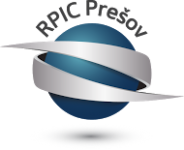Summary:
A Slovenian public research organization has developed a novel method for measuring the fluorescence lifetime instead of or in addition to its intensity. The method enables the fluorescence lifetime of a sample to be determined without lengthy data acquisition and photobleaching of the sample.
Partners are sought among optical instrumentation manufacturers for licensing and technical cooperation agreements.
Description:
Fluorescence is the emission of light by certain substances, for example, fluorophores, such as dyes, or biomolecules, after they have been illuminated with light of specific excitation wavelengths. Measurements of the properties of
fluorescent light emitted by various samples are used in a very wide range of applications. Just some examples are imaging of cell structures, tracking of antibodies and DNA sequencing in biology, detection of cancer cells in medicine
and quality control in pharmaceutical production.
The fluorescence lifetime is most commonly determined with a time-correlated single-photon counting (TCSPC), a method, where the time between the excitation pulse and the detection of individual fluorescence photons is measured. Intrinsic slowness of the TCSPC method and the induced photobleaching limit the applicability of measuring fluorescence lifetime in many potential fields, like in pharmacy, where high throughput of tested samples is required. Also, the TCSPC method requires complex and expensive instrumental setup.
A silicon photomultiplier, on the other hand, is a very fast photodetector, whose response to a single photon is faster than the fluorescence lifetime. Therefore, the shape of the electronic signal, i.e., the waveform, output by the silicon photomultiplier will follow the exponential decay of the fluorescence light resulting from a single pulse of excitation. If the resulting waveform is sampled with sufficient accuracy, the need for long accumulation of single-photon arrival times and also large excitation light intensities can thus be avoided. Excitation light with low intensities reduces the risk of photobleaching. Silicon photomultiplier photodetectors and waveform sampling chips developed for the needs of high energy physics experiments have become low-cost, off-the-shelf components. Thus, the method allows a cost-effective way to measure the fluorescence lifetime and, at the same time, avoids lengthy data acquisition and photobleaching of the sample.
The researchers come from a Slovenian public research organization. Their research involves experimental particle physics on large particle accelerators and development of complex detectors.
The partners are sought among optical instrumentation manufacturers. As a public research organization, the researchers are available for:
• Licensing agreement where potential partners will be offered a license to the pending patent application
• Technical cooperation for the development of a complete instrumentation device for measuring the fluorescence lifetime by this method.
Type (e.g. company, R&D institution…), field of industry and Role of Partner Sought:
The partners are sought among optical instrumentation manufacturers for:
• Licensing agreements to the pending patent application
• Technical cooperation agreements: developing the complete instrumentation device
Stage of Development:
Available for demonstration
IPR Status:
Patent(s) applied for but not yet granted
Comments Regarding IPR Status:
The patent application has been filed in Great Britain. Further applications are planned.
External code:
TOSI20200603001








